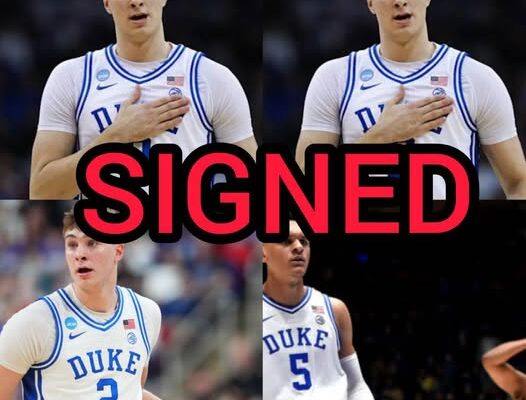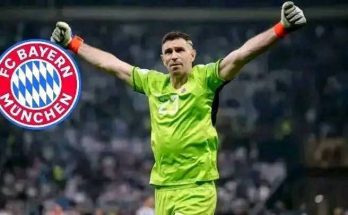Duke Welcomed the Fountain of Youth as College Basketball Teams Across the Country Became Older, Depending on Young, Gifted Players to Succeed
In the ever-evolving landscape of college basketball, the balance between youth and experience has always been a critical factor in team success. Over the past few decades, the sport has witnessed a remarkable transformation. Teams increasingly lean on the prodigious talent of young freshmen—phenoms who arrive on campus already heralded as future NBA stars. These young athletes, blessed with extraordinary skills and athleticism, often carry the weight of expectations for their programs, helping them contend at the highest levels. Yet, while many programs have become heavily dependent on these youthful talents, Duke University has charted a nuanced path—welcoming what might be called a “fountain of youth” but embracing it in a way that integrates experience and growth, striking a balance few others have managed to maintain.
The phenomenon of relying on young, gifted players has roots going back to the early 2000s, when the NBA instituted the “one-and-done” rule, requiring players to be at least one year removed from high school before entering the draft. This rule fundamentally altered the pipeline from high school to professional basketball, forcing top prospects to spend a year or more in college.
For many college programs, this shift created a new dynamic: instead of cultivating players over multiple seasons, teams now found themselves assembling rosters of elite freshmen who might leave after just a single year. Programs like Kentucky, Kansas, and Arizona became synonymous with “one-and-done” success, producing NBA-ready talents who brought immediate impact but often left behind rosters depleted of veteran leadership.
As a result, college basketball became, in many respects, younger. Teams relied on athleticism, raw talent, and star power over the slow grind of development and cohesion. Games became more about explosive plays and highlight-reel dunks, and less about the strategic execution that comes with seasoned, mature players. While this youth movement electrified fans and boosted TV ratings, it also introduced new challenges—team chemistry was fleeting, and programs often struggled to maintain consistency from year to year.
Amidst this backdrop, Duke University’s basketball program, under the legendary leadership of Coach Mike Krzyzewski (Coach K), embraced the “fountain of youth” concept—but in a distinctive way. Rather than simply riding the wave of freshmen phenoms, Duke sought to blend youthful talent with experience and development.
Duke became a destination for many of the country’s top recruits, welcoming the best high school players with open arms. The program’s recruiting prowess was unmatched, often landing multiple McDonald’s All-Americans and future NBA stars each year. The Blue Devils embodied the youthful energy that college basketball celebrated, playing an up-tempo style that thrived on athleticism, speed, and scoring ability.
Yet, Duke’s approach was not purely about immediate impact. While many players did leave after one year to join the NBA, the program invested in player development, emphasizing fundamentals, basketball IQ, and leadership skills. This approach allowed Duke to maintain a competitive edge, with a roster that mixed high-flying freshmen with sophomores, juniors, and even seasoned seniors who contributed leadership and stability.
One key to Duke’s success in welcoming the fountain of youth was balancing the exuberance of youth with the wisdom of experience. Unlike some programs that were almost entirely one-and-done, Duke often retained players for multiple seasons, fostering an environment where talent could mature and flourish.
Players like Nolan Smith, Kyle Singler, and Seth Curry are examples of athletes who stayed beyond their freshman years, growing into well-rounded players who contributed not just through athletic ability but also through leadership and understanding of Coach K’s system. These players provided the glue that held together teams filled with young stars, ensuring that the youthful energy did not spiral into chaos.
Moreover, Duke’s coaching staff emphasized character development and mental toughness, teaching players to handle pressure and make smart decisions both on and off the court. This holistic approach created a culture where the fountain of youth was not just about raw talent, but about cultivating enduring excellence.
The contrast between Duke and other top-tier programs highlights the uniqueness of their approach. Schools like Kentucky have embraced the one-and-done model almost exclusively, fielding teams loaded with freshmen who often lack experience but compensate with extraordinary talent. Kentucky’s strategy brings instant excitement and often short-term success, but the team’s composition can be unstable, with frequent roster turnover leading to inconsistency.
Conversely, programs like Gonzaga or Virginia have emphasized continuity, experience, and development. These teams field rosters of mostly upperclassmen, fostering chemistry and strategic discipline that often outmatch raw athleticism. While these teams may lack the flashy star power of one-and-done squads, they frequently achieve sustained success through cohesion and maturity.
Duke’s approach bridges these two models, combining youthful talent with experience and development. This hybrid method has allowed Duke to compete at the highest level year after year, winning multiple national championships and consistently making deep tournament runs.
The integration of youth and experience at Duke has had a profound effect on team dynamics and performance. Young players bring energy, explosiveness, and a willingness to take risks, which can change the course of games in an instant. However, without guidance, this same energy can lead to mistakes, lack of discipline, and inconsistency.
Experienced players at Duke serve as mentors, helping young teammates navigate the rigors of college basketball. They provide stability during high-pressure moments, help manage egos, and ensure adherence to the team’s principles. This balance creates a harmonious environment where young talents can flourish without being overwhelmed.
This dynamic also extends to leadership roles. Rather than relying solely on seniors for leadership, Duke cultivates leadership across multiple years. Sophomores and juniors often step up, learning from the veterans while guiding freshmen. This multi-layered leadership model strengthens the team’s mental fortitude and resilience.
While Duke’s approach to the fountain of youth has been largely successful, it has not been without challenges and criticisms. The constant influx of elite freshmen sometimes leads to tension regarding playing time and roles. Talented young players eager to showcase their skills can clash with returning players who seek to maintain their status and minutes.
Additionally, the pressure on young stars at Duke is immense. Expectations are sky-high, and media scrutiny is relentless. Some critics argue that this pressure can be detrimental to player development and well-being.
Furthermore, the emphasis on recruiting top talent each year means that not every player fits perfectly into the system. Integrating new players with differing skill sets and personalities requires adaptability from coaches and veterans alike.
As college basketball continues to evolve, Duke’s model of blending youth and experience offers valuable lessons. The “fountain of youth” is more than just a metaphor for talented freshmen—it represents a philosophy of continual renewal balanced with growth and maturity.
The rise of alternative pathways to the NBA, such as professional leagues and overseas options for young players, may reduce the prevalence of one-and-done athletes. This shift could encourage programs to focus more on player development and retention, aligning well with Duke’s philosophy.
Moreover, the increasing emphasis on mental health and player welfare might lead programs to adopt more holistic approaches, emphasizing leadership, character, and team culture over pure talent.
Duke’s ability to adapt to these changes while maintaining a competitive edge will be crucial. By continuing to welcome the fountain of youth with open arms—but doing so thoughtfully and strategically—Duke can remain a model of excellence in college basketball.



